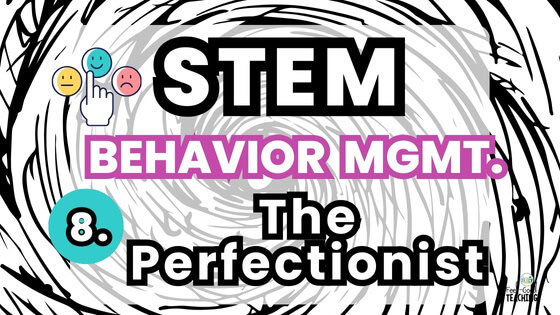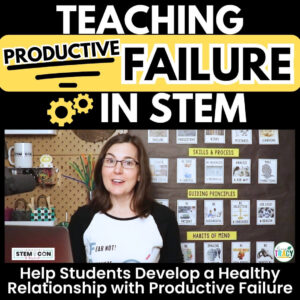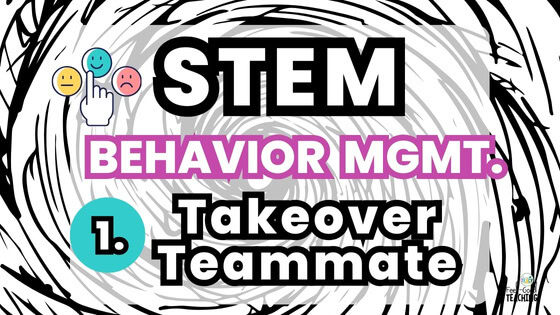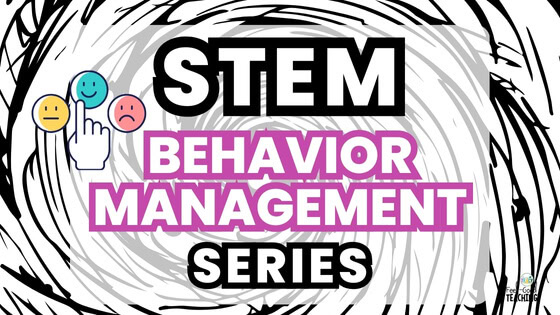Welcome back to the STEM Classroom Management Blog Series! If you missed anything we’ve covered so far on disruptive group dynamics during STEM time — from the Takeover Teammate to the Apathetic Student, you can catch up here.
For the next several posts, we’re looking at more subtle behaviors that still impact collaboration, engagement, and progress.
Let’s dive in!
Meet the Perfectionist
You probably know this student. Their paper is never quite neat enough. They erase and rewrite over and over. They won’t test a design because it’s “not ready.”
During STEM challenges, they might:
- Spend the entire planning period sketching (and re-sketching)
- Refuse to build until they feel totally certain
- Shut down emotionally if the design fails
- Fixate on small imperfections instead of the big picture
They aren’t trying to be difficult. They’re trying to protect themselves—from failure, from judgment, from not getting it “right.”
But the goal of STEM isn’t perfection. It’s progress. It’s risk-taking. It’s iteration. And if we don’t help our perfectionists adapt, they’ll miss out on the joy and growth STEM can offer.
Why It Matters
Perfectionist behavior can:
- Slow or stall group progress
- Increase anxiety and emotional outbursts when things go wrong
- Hurt collaboration when teammates get frustrated waiting for progress
- Prevent iteration — which is essential to the engineering process
Our job isn’t to eliminate a student’s desire to do their best. It’s to help them redefine what “best” looks like in a creative, hands-on, problem-solving environment.
I strongly recommend putting Never Enough: When Achievement Culture Becomes Toxic – and What We Can Do About It (Affiliate link) on your reading list ASAP if you haven’t read it yet. I think every parent, teacher, and person who has a kid they care about in their lives NEEDS to read this book. It could literally save a life.
What to Do Before, During & After a STEM Challenge
Here’s how to support students before, during, and after a challenge when disagreements threaten to derail progress.
🧩 Before the Challenge: Prep the Mindset
1. Normalize mistakes
Build in regular opportunities to share “favorite failures” or failed first tries. Display a bulletin board titled “Failing Forward” or share examples of famous design flops that led to success.
2. Focus on iteration over perfection
Instead of emphasizing a polished final product, praise process and testing:
“How many times did you test it? What did you learn from that version?”
3. Share your own imperfection
Let kids see that you, too, make mistakes, pivot plans, and survive the outcome. It’s powerful modeling.
4. Use time limits strategically
Give short planning windows to encourage students to move forward rather than overthink.
“ You’ve got 10 minutes to sketch, and then we’re building no matter what.”
5. Set a progress goal
Instead of saying “Build the best tower,” say: “Today’s goal is to test three different base shapes.”
🛠️ During the Challenge: Keep Them Moving
1. Watch for analysis paralysis
Gently intervene if a student is stuck planning for too long. Try:
“I love how thoughtful your sketch is—now let’s see what happens when we test it.”
2. Use a timer or checkpoints
Say: “By this time, everyone needs to have built and tested once — even if it’s not ready.”
3. Give safe failure language
Use phrases like:
“That didn’t work—yet.” or “Now we know what not to do. That’s valuable data!”
4. Encourage visible iteration
Have students sketch each version or keep a sticky note log of what they changed and why. This shifts the focus to progress.
5. Use peer partners
Pair a perfectionist with a peer who’s comfortable moving quickly or taking risks. Let the teammate model forward motion.
📘 After the Challenge: Reflect & Reset
1. Use reflective questions
Prompt students with:
- What surprised you?
- What did you learn from a mistake?
- How did your thinking change from your first to final design?
2. Celebrate growth, not outcomes
Instead of spotlighting the tallest tower or strongest structure, share stories of persistence, teamwork, and learning from failure.
3. Reframe failure as feedback
Post a mantra like: “Mistakes are data.” Help students see each failed test as one step closer to success.
4. Encourage journaling or drawing
For some perfectionists, private reflection helps process emotions and reset expectations.
5. Circle back 1:1
Take time to check in with students who seemed overwhelmed. Reaffirm effort and help them plan for progress next time.
Final Thoughts
Perfectionism isn’t just about neatness or high standards. It’s often rooted in fear of failure, judgment, or not meeting expectations.
STEM challenges provide a safe, supportive place to chip away at that fear. To build tolerance for mistakes. To shift from “perfect” to “possible.”
By supporting perfectionist students with care and structure, we help them take the kinds of risks that lead to true learning.
You’re planting seeds of resilience. Keep going.
💡 Want a Free STEM Classroom Management Handbook?
I’m putting together a printable copy of these strategies as well as navigating other tricky STEM behaviors perfect for keeping in your lesson planner or sharing at your next PLC or team meeting. It will be sent to every subscriber on my email list when the series is complete. Sign up below to get on the list.
Looking for More In-Depth Tips?
STEM Rubrics and Post-Build Routines:
✨ Next in the Series…
The Loophole Finder — the student who always seems to “reinterpret” your criteria & constraints against the spirit of the challenge.
Explore all posts in the STEM Classroom Management Series here.
Pin it. Share it. Save it. You never know when you’ll need just the right strategy for just the right kid.








